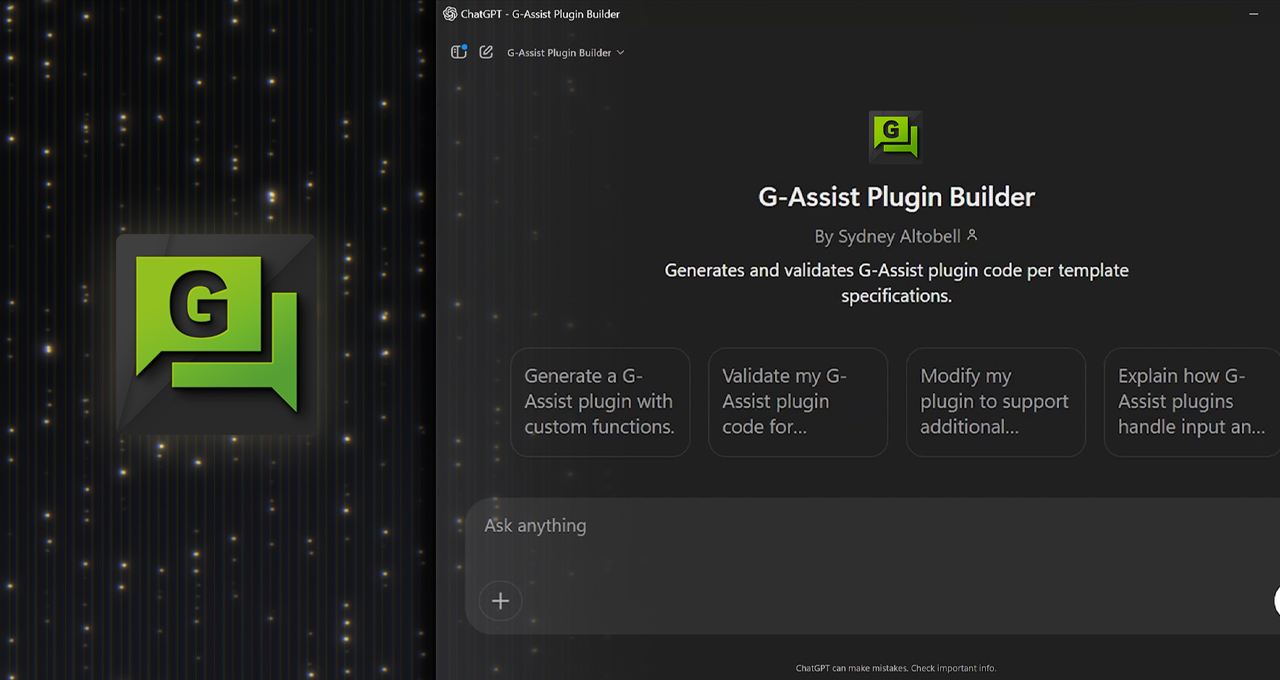Nvidia's G-Assist adds a plug-in builder so you can create your own PC AI automations

Key Points
- Nvidia is expanding its G-Assist AI tool with a plug-in builder, enabling users to create custom voice commands and automations for PC control using either voice or text.
- The plug-ins operate locally via the Nvidia overlay, using JSON and Python files without requiring a cloud connection, and can handle tasks like music control, weather queries, or RGB lighting management.
- Nvidia offers sample plug-ins, instructions, and a GitHub repository, targeting technically experienced users with RTX graphics cards who want to build their own automations using open APIs.
With its G-Assist tool and a new plug-in builder, Nvidia introduces a system for AI-assisted PC control. Developers can create their own commands to manage both software and hardware functions.
Originally launched as an experimental assistant for monitoring and optimizing system settings, G-Assist now supports extensibility through what Nvidia calls a "plug-in builder." According to the company, users can create their own commands and automations by voice or text input.
G-Assist extensions rely on JSON-based configuration files, with logic written in Python. These files are stored locally and automatically recognized by the G-Assist system. Users can access them directly from the Nvidia overlay without leaving their current application.
The assistant runs a lightweight language model locally on RTX GPUs, enabling inference without relying on a cloud connection. It can also be integrated into agent-based systems like Langflow and used as part of broader automation workflows.
Sample plug-ins offer control over apps and peripherals
Nvidia provides several sample plug-ins, including tools for controlling music playback and volume via Spotify, querying Google’s cloud-based Gemini language model for web search and conversation, accessing Twitch stream data, and displaying weather or stock market information.
G-Assist can also manage select peripherals. For example, users can issue voice or text commands to adjust fan profiles, RGB lighting, or benchmarking tools for devices from Logitech G, Corsair, MSI, and Nanoleaf.
The required files, documentation, and sample extensions are available via a public GitHub repository. For developers building custom extensions, Nvidia points to several freely available API directories, including publicapis.dev, free-apis.github.io, apilist.fun, and APILayer.
Before the introduction of the plug-in system, G-Assist was a closed tool limited to system control on RTX PCs. Now that it can be extended through community-built plug-ins, Nvidia is shifting more of the design options to the community. However, the tool remains geared toward technically experienced users and is limited to current Nvidia hardware.
AI News Without the Hype – Curated by Humans
As a THE DECODER subscriber, you get ad-free reading, our weekly AI newsletter, the exclusive "AI Radar" Frontier Report 6× per year, access to comments, and our complete archive.
Subscribe now